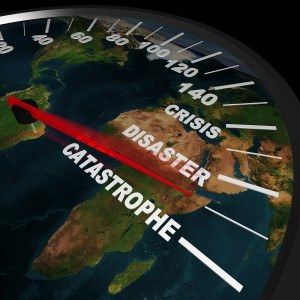 What if history had a different outcome? Lloyd’s of London and RMS say that exploring that idea for major catastrophe events (or near misses) of years past could actually help insurers better analyze future risk.
What if history had a different outcome? Lloyd’s of London and RMS say that exploring that idea for major catastrophe events (or near misses) of years past could actually help insurers better analyze future risk.
The concept, known as counterfactual thinking, has a role to play in the property/casualty insurance world, according to a recent joint report issued by both companies.
“Insurers will benefit from looking at the past as just one realization of what might have happened. Whatever the past, risk insight is gained from exploring how things might have turned for the worse – the downward counterfactuals,” Gordon Woo of catastrophe modeling firm RMS said in prepared remarks.
Woo said that a “counterfactual perspective” while exploring how a historical catastrophe event or close call might have ended differently can give insurers insight “into rare extreme losses that might otherwise have come as a surprise.”
Trevor Maynard, head of innovation at Lloyd’s said the process works because it anchors “downward counterfactual events” to real historical experience.
“The fact that downward counterfactual events are anchored to actual historical experience helps facilitate complex explanation, deeper understanding and more coherent communication of future risks and modeling certainty to board members, policyholders, risk managers and others,” Maynard said in prepared remarks.
Benefits of Counterfactual Analysis
The Lloyds/RMS report argues that counterfactual analysis can benefit insurers in multiple ways, such as stretching the range of event possibilities plausibly and scientifically. What’s more, the process can also minimize bias in models based on the same datasets, and help explore the tail risks. Such an exercise also helps identify and prepare for Black Swan events, Lloyd’s RMS said.
Counterfactual analysis works in other ways, too, the report asserts, including helping underwriters and risk managers analyze extreme and emerging risk, and expanding claims books and loss catalogues. Lloyd’s and RMS also see the process as helping facilitate complex explanation, deeper understanding and more coherent communication of future risks and modeling uncertainty to board members, policyholders, policymakers, risk managers and non-experts.
The process, they said, can be applied by property/casualty insurers and reinsurers for their model pricing, capacity management and capital calibration catastrophe modeling activities.
One example of how the exercise could work: Lloyd’s/RMS said it can be used regarding an event on July 7, 2017, where Air Canada flight AC759 from Toronto was preparing to land at San Francisco airport, but the pilot didn’t see four fully-loaded planes on the taxiway it approached that were waiting for take-off. Air traffic control ordered the plan to abort the landing, and the pilot avoided hitting the third plane on the taxiway by about five seconds. Crisis averted.
But what if the plane actually hit the others parked on the taxiway? For one thing, Lloyd’s/RMS noted that an accident that day would have become one of the worst in aviation history. They assert, however, that a downward counterfactual analysis, used reasonably and scientifically, could help insurers understand potential total economic and insured losses from a catastrophic event of this nature, if it actually happened.
“It would also help insurers create an alternative claims book, which would offer a view of plausible losses that could have impacted their business,” the report noted.
The full report is called: “Counterfactual Disaster Risk Analysis: Reimaging History.”
Source: Lloyd’s of London, RMS





















 Executives on the Move at Liberty Mutual, Cowbell, W. R. Berkley
Executives on the Move at Liberty Mutual, Cowbell, W. R. Berkley  Berkshire Hathaway Enters Post-Buffett Era as Share Prices Fall
Berkshire Hathaway Enters Post-Buffett Era as Share Prices Fall  Five AI Trends Reshaping Insurance in 2026
Five AI Trends Reshaping Insurance in 2026  Why the Middle Market Matters and How Insurers Can Capture It
Why the Middle Market Matters and How Insurers Can Capture It 








